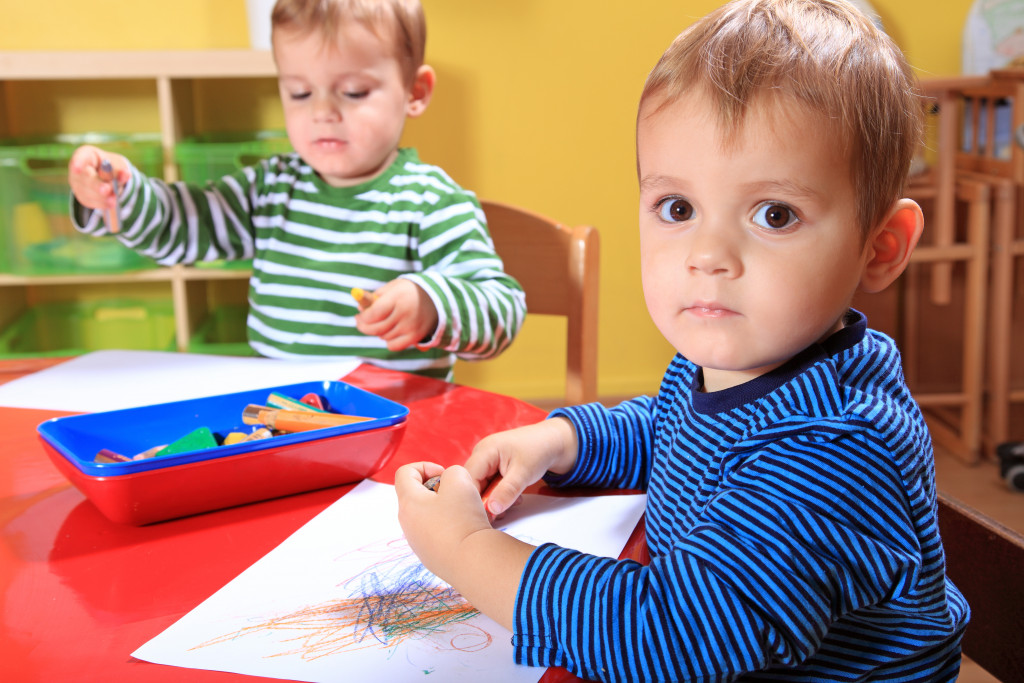Creativity is more than just cutting colorful paper dolls or molding various shapes on clay. Its benefit extends to fostering imagination vital as we grow old. For one, creativity is found to improve our mental health and increase our happiness.
Moreover, it has the potential to decrease one’s risk of dementia and boost the immune system. In another study, researchers have linked it to a longer and healthier life as creativity lowers stress; thus, helping the brain function better and keep its neural networks despite old age. In addition, art as a whole discourages uncertainty resulting in better problem solving and gaining more self-confidence.
Thus, it is vital to develop this skill as early as possible. The good news is creativity can be both innate and learned. Here’s how you can encourage your child to express themselves through art.
Create a space for them at home.
Deciding to introduce your child to art means you are ready for the mess that comes with it. It could be from colored walls, messy clothes, and art supplies scattered everywhere. While these are inevitable, clutter at home may also cause accidents and a constant eyesore that may cramp your productivity. This is especially true if you are a full-time parent or currently on a work-from-home setup.
Therefore, it would be best to set an area for your toddlers to do their crafts. It could be within or outside your home as long as they are safe and have enough space to move around. This will help them find their materials easier and provide a haven to explore their creative side.
Moreover, consider child-friendly art materials, especially if you have younger children. For example, some markers may contain hormone-disrupting chemicals harmful for both you and your child. So switch to water-based or washable materials instead.
Additionally, stay away from equipment without proper labels, as these may pose a potential threat to your children’s safety. Instead, stick to child-proof scissors and organic-based paints. If you can, supervise them at all times, but let them explore their creative side independently.

You are a parent, not an art critic.
Some people tend to insist their ideas on others, thinking theirs is better or right. However, this is highly discouraged, especially when you’re guiding your child. It is crucial to give them the freedom to explore what’s on their mind and project it the way they see fit. This will encourage them to embrace their individuality and find their rhythm.
Telling them that they’re wrong may only discourage them further. Children are naturally curious individuals, and this is the stage where they need your guidance the most. Thus, if your child thinks that cows are pink or that the moon is square, avoid criticizing them.
Instead, encourage them to talk about their doodles. Remember, some of the most celebrated masterpieces were once criticized. Let them explain why they drew the clouds that ways and answer them honestly without judgment.
Share your insight and encourage them to do the same. If they have any questions, no matter how silly they may sound, entertain them. You may also use their query to start a meaningful discussion.
Moreover, use this as a bonding moment with your kid. Visit museums and galleries around town and let them interpret the pieces of art they see. If you can, watch age-appropriate Broadway shows or suggest books that will further pique their growing minds.
If going out is an issue, you may make DIY crafts with them at home. For instance, customizing their rooms with various patterns from brands like Vinyl Outlet or putting their colorful designs to life by creating Halloween costumes are a great way to get to know them better. Encouraging their curiosity will help them develop their imagination and enhance problem-solving skills.
Don’t dismiss technology.
Technology heavily influences the world we have now within our reach. Unfortunately, we have become dependent on our gadgets that are sometimes deemed harmful. While this is true, it is crucial not to remove innovation entirely from fostering your child’s development.
Some parents may think that the best way to introduce art to their kids is to stick to the traditional approach. However, studies show that offline and online learning significantly improve one’s motor skills. This will allow your child to adapt to changes quickly and be more receptive to challenges and opportunities. Therefore, take time to devise a plan to balance your child’s time in both areas.
Cultivating creativity is fundamental, especially for one’s growth and development. It encourages children to think outside the box and gain the courage to explore new things, and eventually, the world. Therefore, consider investing in the art for your child’s future.




